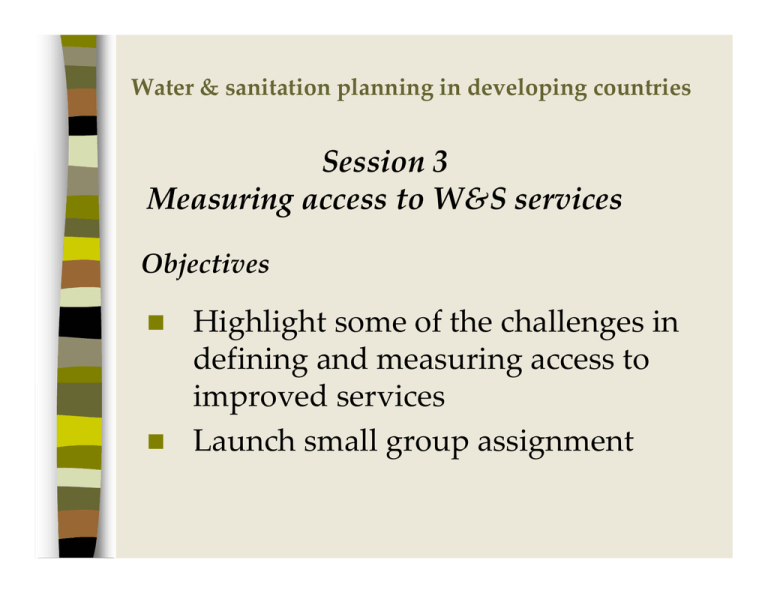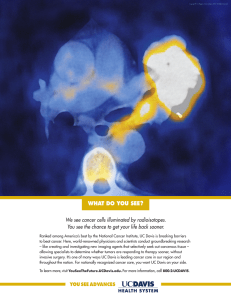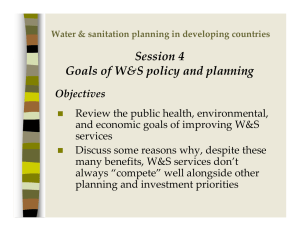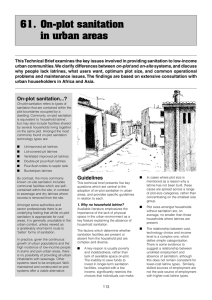Session 3 Measuring access to W&S services Highlight some of the challenges in defining and measuring access to
advertisement

Water & sanitation planning in developing countries Session 3 Measuring access to W&S services Objectives Highlight some of the challenges in defining and measuring access to improved services Launch small group assignment Measuring access to W&S services Davis 2005 The importance of measurement Measuring both inputs (investment, construction, etc.) and outputs (access to and use of improved services, health outcomes) is a critical element of W&S policy and planning. Why? To measure progress (or lack thereof) To relate progress to specific policies and programs, and make changes as necessary To ‘benchmark’ performance by different institutions Measuring access to W&S services Davis 2005 How should we define access to W&S? WHO/UNICEF: Household has “access to improved water supply” if it can obtain 20 lpcd from an “improved source” within 1 kilometer of the home Unimproved Unprotected well Unprotected spring Vended water (including tankers) Bottled water Improved Household connection Public standpipe Borewell/Tubewell Protected well or spring Rainwater Measuring access to W&S services Davis 2005 Defining access to W&S, cont’d. WHO/UNICEF: Household has “access to improved sanitation” if it has access to an “improved facility,” distance not specified Unimproved Bucket/service latrines Public latrines Improved Household toilet with sewer connection or septic tank Pour‐flush latrine Simple or twin pit latrine Critiques of these definitions? Can we do better? Measuring access to W&S services Davis 2005 Features of good measurement Validity: indicator relates closely to concept you are interested in Valid, not very reliable Reliability: Repeated Reliable, not very valid measures will yield same value if state of the world hasn’t changed Feasibility: Can obtain required information with reasonable expenditure of time and money Valid and reliable Which is the most feasible? Measuring access to W&S services Davis 2005 Small group assignment Form groups of 3 or 4 students (preferably including some you didn’t know before this weekend, and mixing planners and engineers) As a group, develop a definition of ‘access to safe water supply’ and ‘access to adequate sanitation’ that you think should be adopted for the W&S sector As a group, decide on no more than 6 indicators (variables) that should be used to measure access to safe/improved water supply and access to adequate sanitation Prepare a short (~10 minutes) presentation for this afternoon’s session Measuring access to W&S services Davis 2005 Tips on tackling the small group assignment Make sure you are in agreement on clear definitions of access to water supply and sanitation before you start to work on your indicators. (This is harder than it sounds!) Each indicator should be accompanied with specific measurement rules. For example, if you want to use the indicator “DISTANCE” as part of your water access definition, tell us how that should be measured (e.g., meters, minutes’ walk). We should be able to take your list of indicators and know exactly how to operationalize them in the field. Measuring access to W&S services Davis 2005 Tips cont’d. When developing indicators, remember to think about whether they are reasonably valid, reliable, and feasible for implementation on a regular basis in developing countries. Questions?






